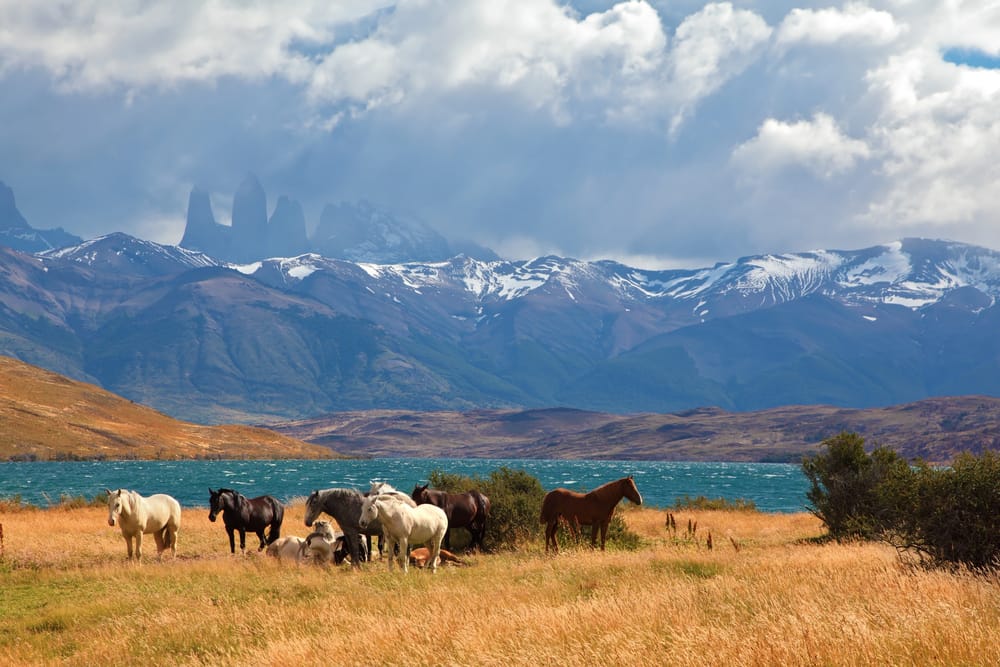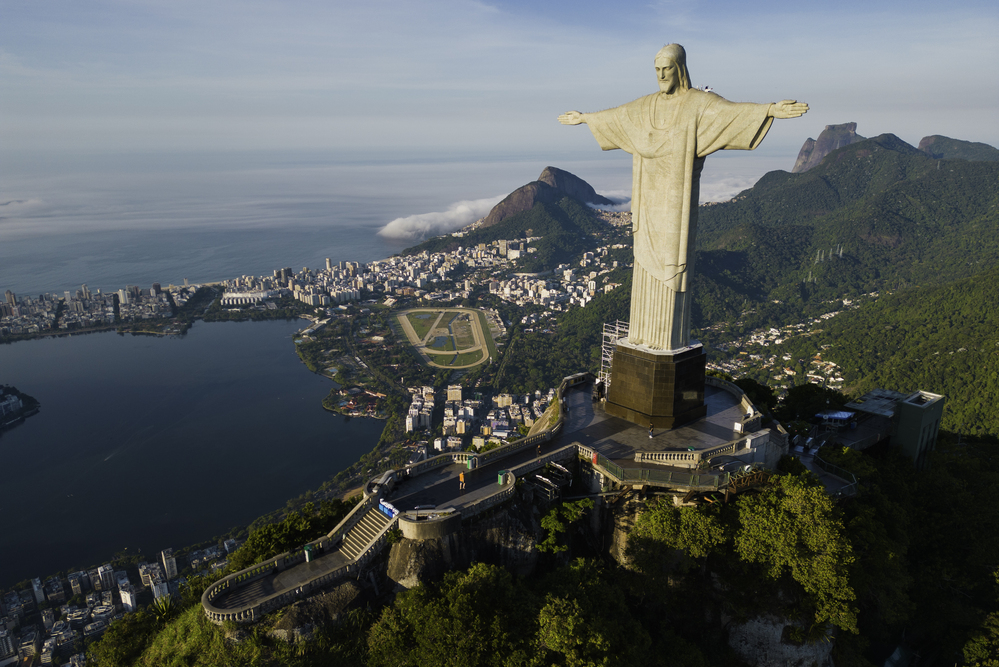Stepping into Patagonia feels like crossing the edge of the known world. On the Chilean side, you find wild, raw, almost untouched nature. Torres del Paine welcomes you with sharp peaks, emerald lakes, and winds that seem to have a will of their own. It’s a dramatic beauty that envelops and challenges you.
But it doesn’t stop there. On the Argentine side, the landscape changes its tone without losing its impact. El Calafate introduces you to the giant of ice: the Perito Moreno Glacier. Meanwhile, El Chaltén, with the imposing Fitz Roy, invites you to hike under a clear sky, with silence as your soundtrack.
Despite the differences, both sides complement each other. In this article, you’ll see what to do in Chilean and Argentine Patagonia and their main attractions. Each stretch has its own soul, but all of them make you feel part of something much greater. Patagonia is one of the top 7 most beautiful places to visit in South America.
Getting to Know Patagonia
Patagonia is a vast region in the south of South America, divided between Chile and Argentina. It’s not a country, nor a city. It’s more like a world of its own, where nature still calls the shots.
On one side, you’ll find glaciers that look like they came straight out of a movie. On the other, there are cold deserts that stretch as far as the eye can see. Patagonia blends snow-covered mountains, dense forests, crystal-clear lakes, and arid plains. It’s as if someone combined all kinds of landscapes in one place, just to amaze you.
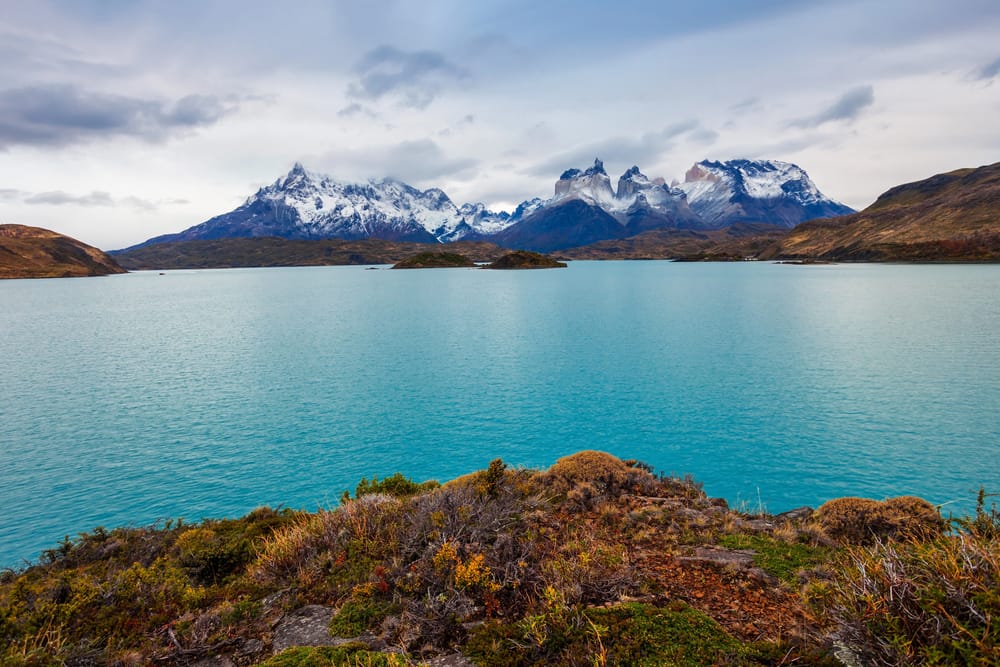
It’s also synonymous with isolation. Distances are vast, cities are few, and silence seems to be part of the scenery. If the planet had wild, frozen lungs, one of them would be there. It’s a destination for those seeking something different, more real, more raw. Visiting Patagonia feels like diving into a part of the world that hasn’t yet bowed to the rush of modern life.
Geography
Get ready to feel small. When you look at Patagonia on the map, it takes up a massive slice of southern South America. The Argentine side is the largest. It covers around 777,000 square kilometers. That’s more than twice the size of Italy or, if you prefer, larger than all of France and Portugal combined. The region stretches from the Andes to the Atlantic Ocean. It’s as if you were crossing a continent within a single country.
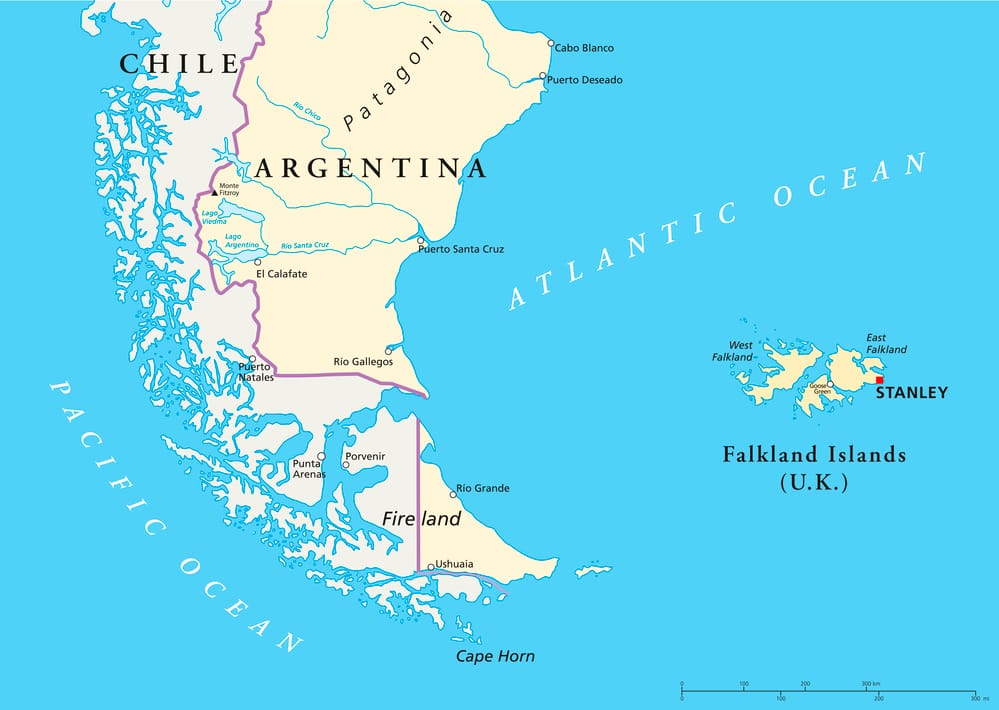
Chilean Patagonia, on the other hand, is smaller—but no less striking. It covers about 256,000 square kilometers. Sounds like little? Just know that’s more than the entire United Kingdom. The interesting thing is that despite being smaller, it has a much more rugged geography. Mountains, fjords, channels, and glaciers make the territory hard to cross, but fascinating to explore. While in Argentina the terrain is open and dry, in Chile everything hides between lakes and mountains.
Together, they form one of the largest wilderness areas in the world. But don’t be fooled. Here, size isn’t measured only in kilometers. It’s measured in the silence of the landscapes, in the strength of the winds, and in the impact this place leaves on those who visit it. Each side has its own giant. And when you’re there, you’ll feel like you’ve entered a world apart.
History
The history of Patagonia feels like a legend carried by the wind. As you begin to explore, you realize that this remote corner of South America has an ancient and mysterious past. Indigenous peoples like the Tehuelches and the Mapuches lived there for thousands of years, adapting to the cold, to the isolation, and to the rhythm of nature. They hunted guanacos, navigated the lakes, and respected the land as part of their very existence.
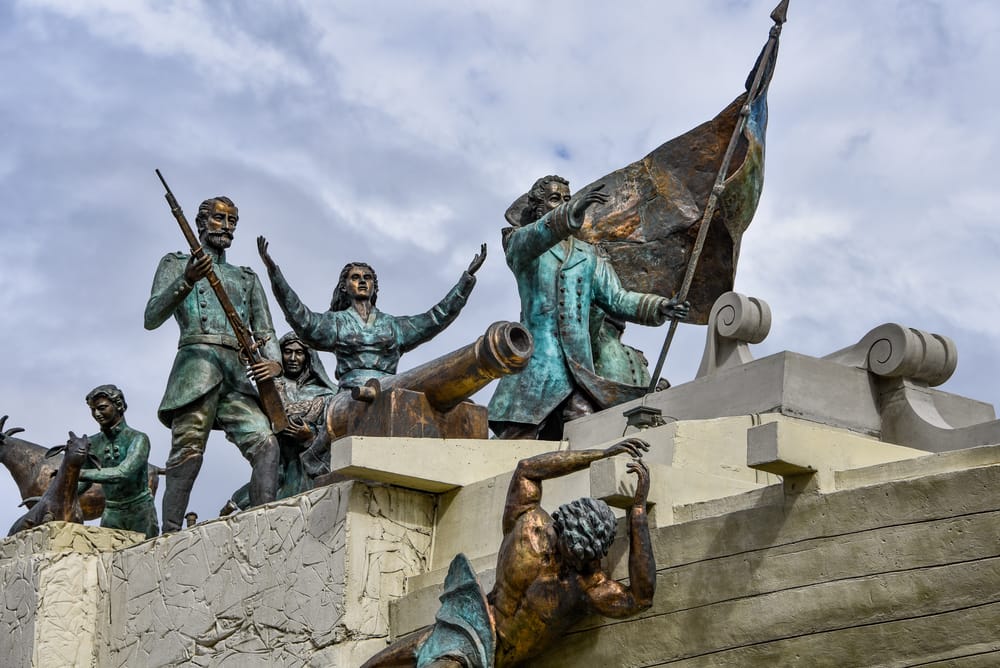
With the arrival of the Europeans, everything changed. Spaniards and Portuguese tried to conquer the territory, but it was the British—and later the Argentines and Chileans—who truly advanced. It was a slow, difficult process, full of conflicts. Patagonia became the stage for disputes, agreements, and even legends about giants (like the ones Magellan swore he had seen).
Today, when you walk through the region, you feel that time moves slowly. There’s still something wild, as if the past were hidden among the mountains and valleys. That’s how the history of Patagonia is: silent, but vast. Like a memory carried by the wind, drifting slowly from one side to the other.
Now we’re going to dive into the things to do in Chilean and Argentine Patagonia, showcasing the main attractions that are well worth adding to your South American travel itinerary.
Chilean Patagonia
If you want to feel small in the face of nature, Chilean Patagonia will show you exactly what that means. There, everything feels bigger, wilder, and more intense. The landscapes stretch out as if they have no end, the winds whistle constantly, and the silence—when it comes—is almost sacred. In every corner, you’ll find a scene that looks like it came from another world. Come discover the things to do in Chilean Patagonia and its main attractions.

Start with Torres del Paine National Park. It’s the postcard image of Chilean Patagonia—and not by chance. The stone-carved mountains, massive glaciers, turquoise lakes, and wide-open plains form a combination that leaves you speechless.
The famous Torres (which give the park its name) rise like sentinels, watching over everything with grandeur. Hiking there feels like walking through an art gallery created by the Earth. And it doesn’t matter the season—each time of year reveals a different side of the park.

Then, head to the Grey Glacier. It’s located within Torres del Paine itself and looks like a glowing blue wall under the light. You can go ice trekking or take a boat ride that gets you up close to the glacier. The cold on your face and the sound of cracking ice make everything feel even more real.
And if you’ve already seen Perito Moreno in Argentina, you’ll notice the differences. Grey is more rugged, wilder—almost like Moreno’s rebellious cousin. It spans over six kilometers in width, with blue ice walls that look hand-carved. It’s like seeing a piece of Antarctica right there, before your eyes.
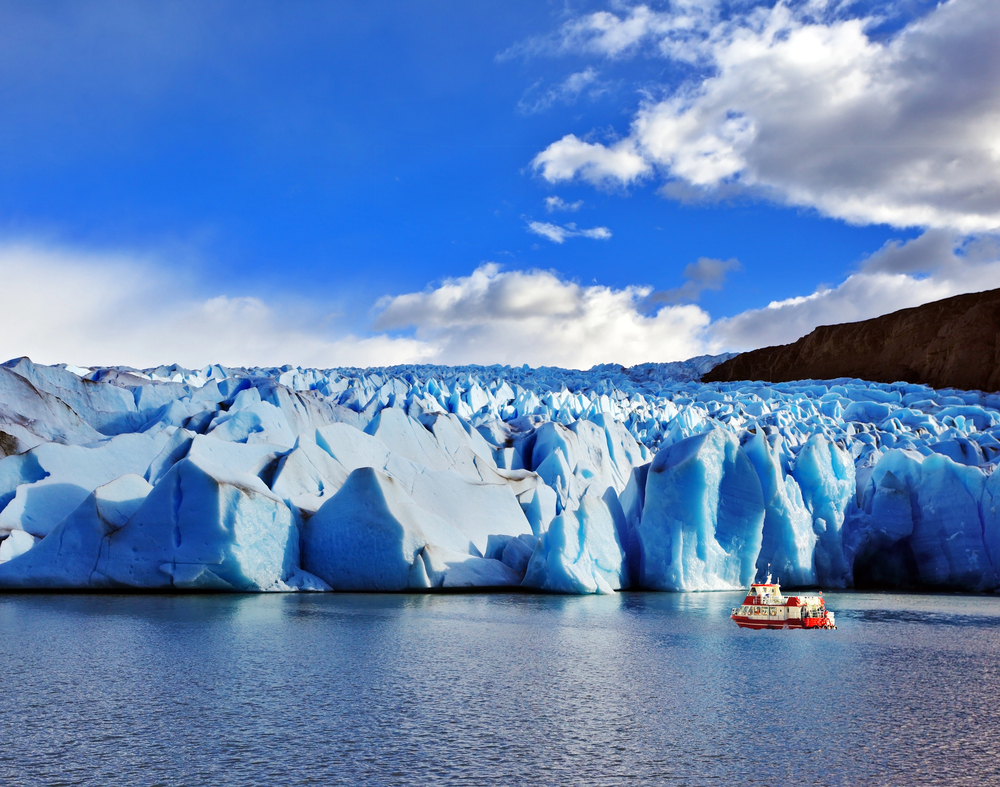
Farther south, you’ll find Puerto Natales. The town is small but charming. It serves as a base for exploring the park and other surrounding areas. Walking along the edge of the channel is a simple but delightful activity. You see mountains in the background, old boats, and—if you’re lucky—even black-necked swans. It’s one of those places that invites you to slow down.
The colorful houses line the waterfront (like brushstrokes on a gray-blue canvas), creating a contrast that brightens up cloudy days. You quickly realize that Puerto Natales isn’t just about scenery. Artisan cafés warm up cold mornings, while restaurants serve tender lamb that melts in your mouth. In the afternoon, you can hop on boat tours that wind between mountains and floating ice.
Compared to bigger cities, everything here is compact and convenient. You leave your hostel and, within minutes, you can buy supplies, rent gear, and book a tour. You’ll still have time to visit the Cueva del Milodón, where giant fossils remind you that this corner of the world holds deep, ancient secrets.

Now, if you want to go even farther, travel to the Aysén region. It’s less known, but it holds incredible treasures. One of them is the Marble Cathedral, on Lake General Carrera. The caves, sculpted by water over centuries, have shapes and colors that resemble a painting.
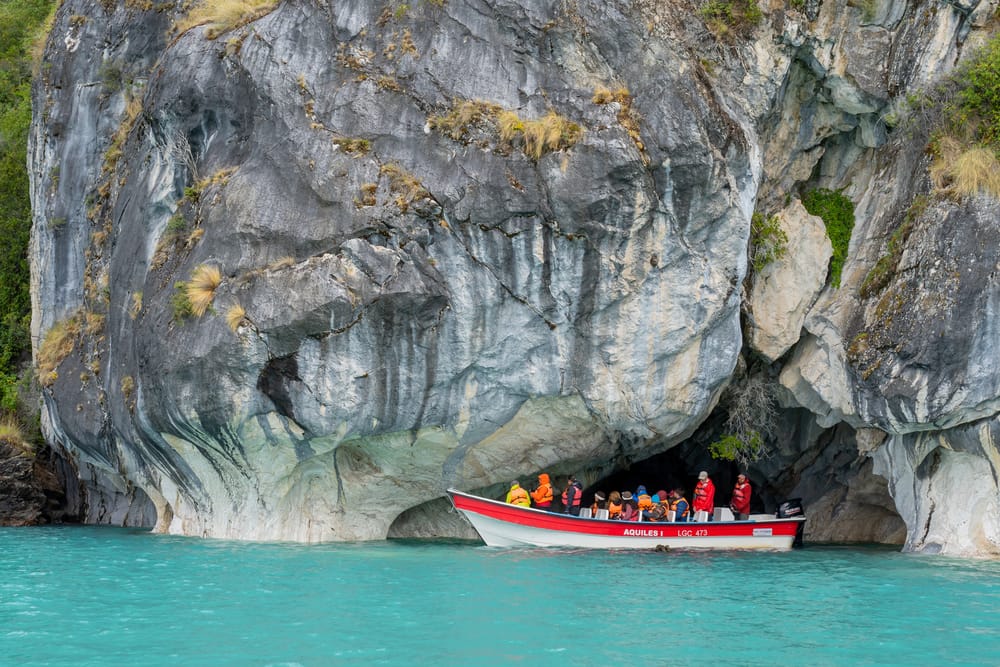
And the reflection on the lake makes everything even more magical. The road to get there (the Carretera Austral) is an adventure in itself. Full of curves, rivers, and bridges, it shows that sometimes the journey is just as beautiful as the destination.
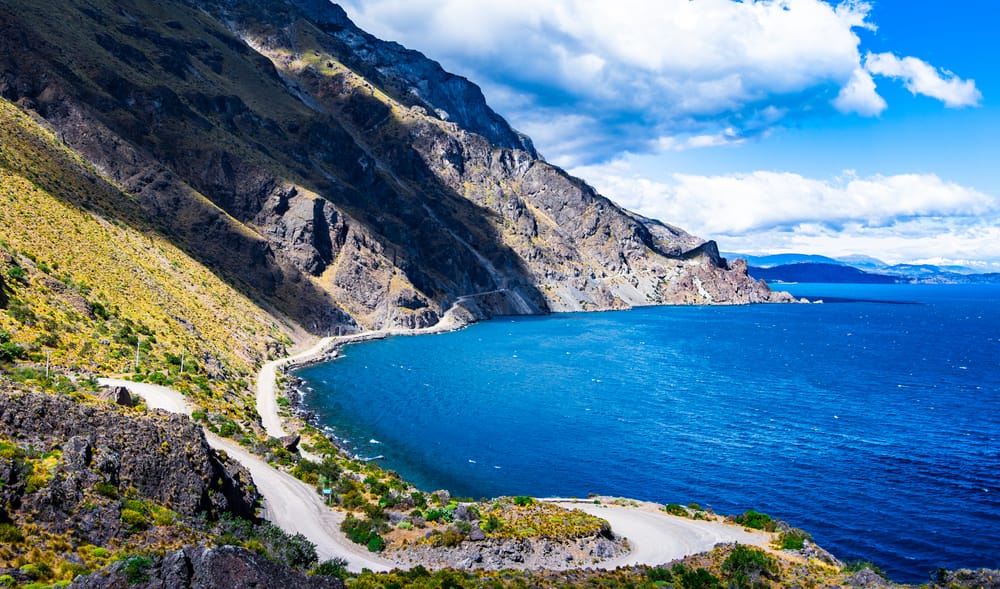
And you can’t forget the Chilean fjords. With formations reminiscent of those in Norway, they blend snow-covered mountains, icy waters, and overcast skies. In some areas, the only way to get there is by boat or plane. It gives you the feeling of discovering something no one else has seen. A kind of isolation that doesn’t feel scary—but welcoming.
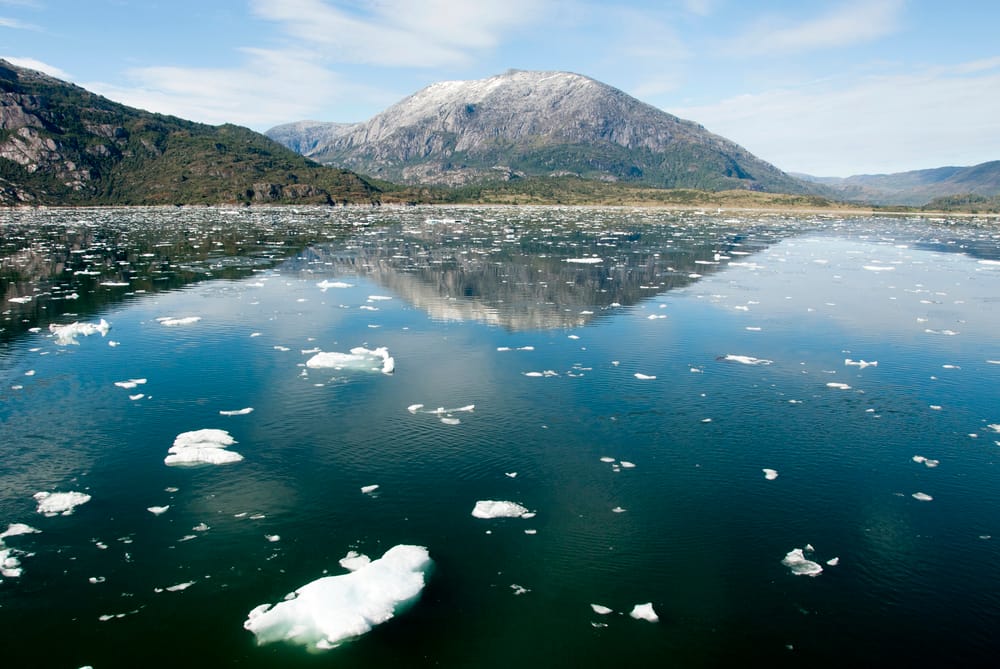
In Chilean Patagonia, nature speaks loudly. It doesn’t need filters or touch-ups. Everything there is raw, grand, and full of character. Here, you’ll find a more secluded, wetter, and more mysterious side—like stepping into a secret kept by the mountains and the ice.
You leave changed. Lighter, more awake, and with a heart full of landscapes no one can take away from you. And to make it even better, we have a full article about Chile, click and discover the best it has to offer.
Argentinian Patagonia
Imagine stepping into a scene straight out of a documentary. In Argentinian Patagonia, that’s exactly what awaits you. You’ll find landscapes so vast and varied that at times, you’ll doubt your own eyes.
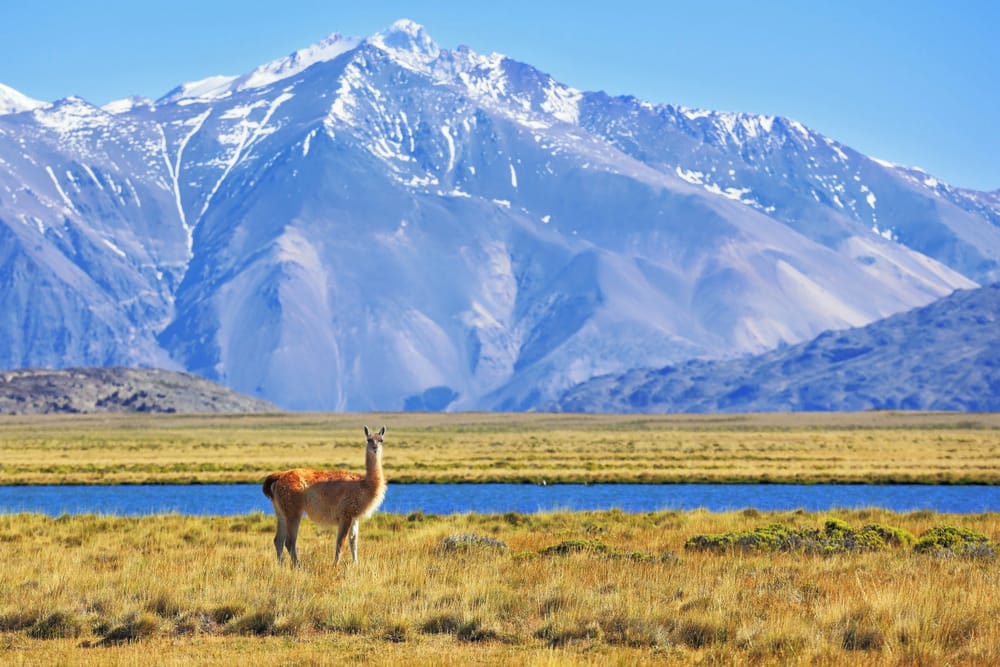
With every step, a new picture unfolds: snow-covered mountains, deep blue lakes, creaking glaciers on the move, and a peace that only the most remote places can offer. Come discover what to do in Argentinian Patagonia and explore its top attractions.
Start with the Perito Moreno Glacier, in El Calafate. It’s not just famous—it’s massive, stretching over 30 km with ice walls reaching up to 70 meters high. Watching a chunk of ice break off and crash down with a thunderous roar is a spine-tingling experience. And the most incredible part: it’s still advancing, unlike most glaciers around the world that are retreating.
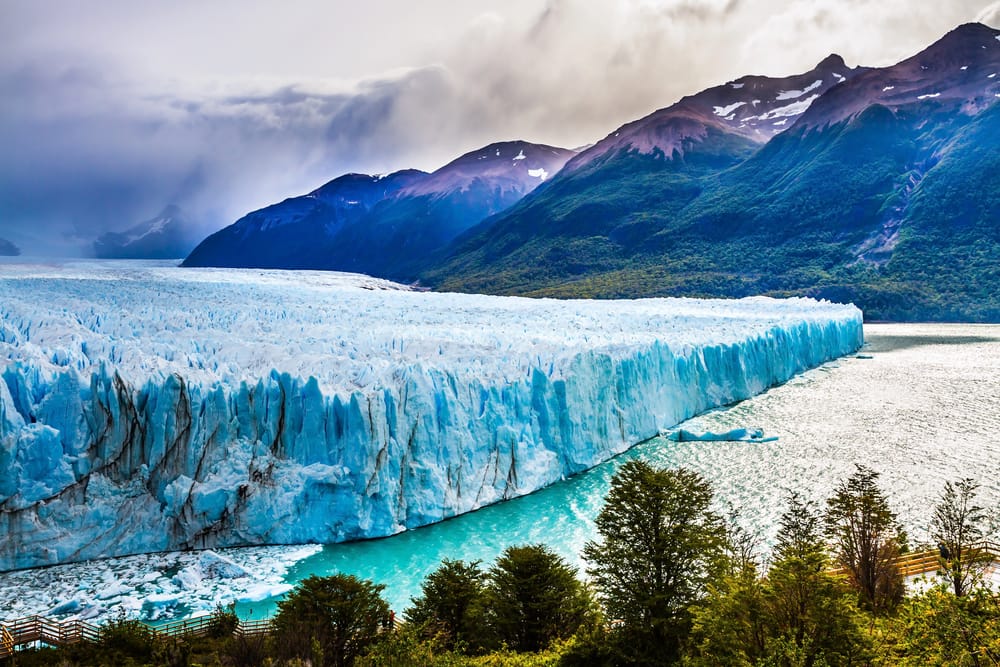
Next, head to El Chaltén, Argentina’s trekking capital. There, the highlight is Mount Fitz Roy, rising like a blade of stone pointing toward the sky. The trails are challenging, but every bit of effort is worth it. You’ll hike through valleys, rivers, and forests, and just when you least expect it, you’re met with breathtaking views. It feels as if nature went out of its way to surprise you at every turn.
El Chaltén lies in the heart of Patagonia. This small village feels like it came straight out of an adventure tale. It’s located in Los Glaciares National Park, in southern Argentina, and is surrounded by towering mountains, crystal-clear rivers, and awe-inspiring trails.
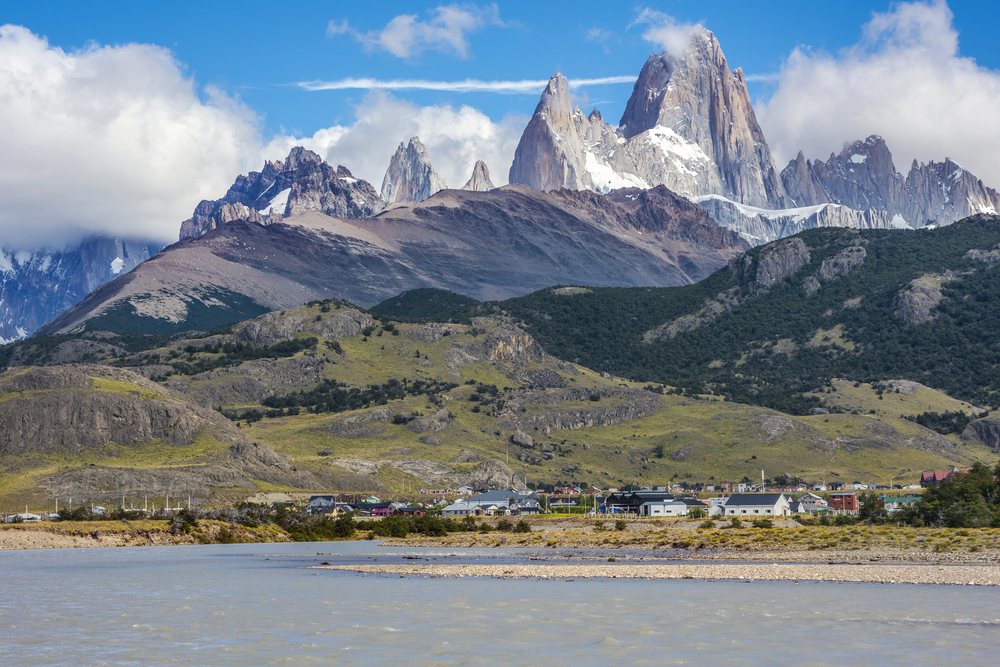
If you’re looking for something different, visit the Valdés Peninsula. Here, Patagonia takes on a new tone. The mountains give way to wildlife. It’s a natural sanctuary where you can see whales, penguins, sea lions, and even orcas. Depending on the season, you’ll feel like you’ve stepped into an Argentinian version of National Geographic.

Farther south, it’s time to discover Ushuaia, the southernmost city in the world. That alone is fascinating—but there’s more. It’s home to Tierra del Fuego National Park and offers boat tours through the Beagle Channel. You’ll see islands, lighthouses, and wildlife found nowhere else on Earth. Being there feels like reaching the end of the world—in the best possible way.
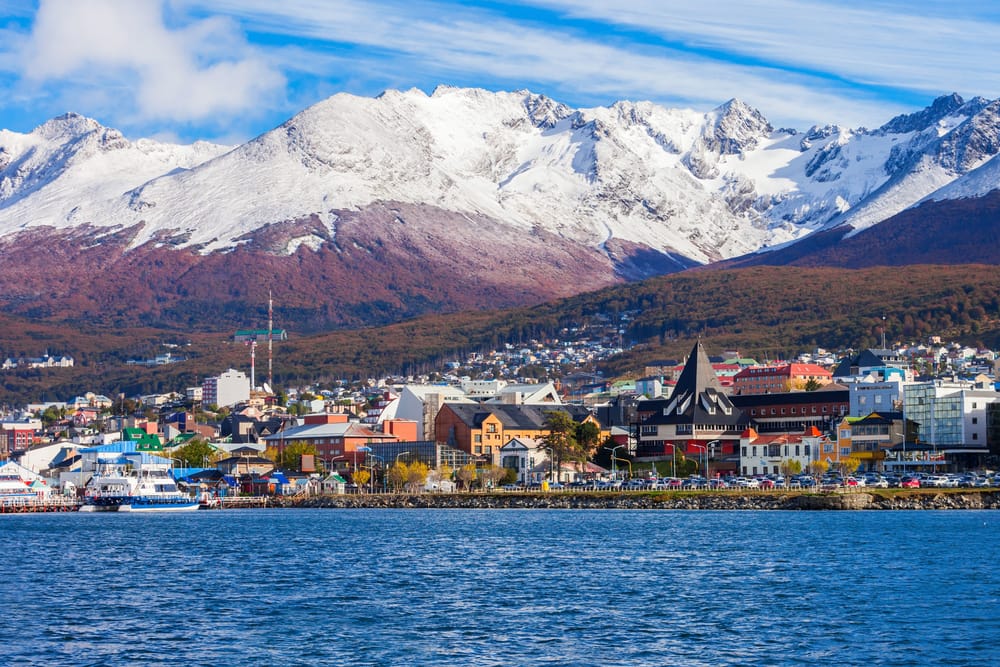
And there’s more. Bariloche, in northern Patagonia, offers a completely different vibe. Mountains, lakes, and forests evoke the feel of the European Alps—only here, it’s empanadas and dulce de leche instead of fondue. In winter, you can even go skiing. In summer, it’s perfect for hiking or kayaking. It’s a place to relax and be enchanted by the harmony between city life and nature.

Argentinian Patagonia is just like that: grand, quiet, and full of surprises. Each destination has its own soul. Each landscape speaks to you in a different way. And the best part is that, even with so much to see, you still feel far away from everything. As if time moved more slowly and nature had taken back the spotlight in the story.
And beyond all that, Argentinian Patagonia is located in the best country to visit in South America. Don’t miss the chance—check out the full article on Argentina and discover everything it has to offer.
How to Get to Patagonia
Where do you begin this incredible journey? Before getting lost in the winds and mountains, you need to plan your route. And yes, it can be a long one—but the journey is already part of the adventure. Come discover where to start exploring Chilean and Argentinian Patagonia.

If you want to explore the Argentinian side, start in Buenos Aires. From there, you can catch a flight to cities like El Calafate or Ushuaia. El Calafate is the gateway to the Perito Moreno Glacier, one of the region’s most iconic landmarks. Ushuaia, on the other hand, takes you to the far south, where you truly feel like you’ve reached the end of the world. Domestic flights in Argentina are frequent, and the infrastructure works well—even in remote areas.
Now, if your destination is Chilean Patagonia, the ideal starting point is Santiago. From there, fly to Punta Arenas or Puerto Natales. Punta Arenas lies farther south and has a frontier-town vibe, with strong winds and rich stories. Puerto Natales puts you closer to Torres del Paine National Park. Domestic flights in Chile are well-organized, but the distances are vast—so be prepared for long travel times.
But if you have time (and a road trip spirit), the Carretera Austral is a one-of-a-kind option. This road connects southern Chile to several isolated regions, winding through forests, fjords, and glaciers. It’s the kind of route where the journey becomes the destination. Don’t expect comfort—expect raw beauty and silence.

Another option is to cross from one country to the other. For example, you can travel overland from El Calafate to Torres del Paine. The journey takes a few hours and passes through open landscapes where guanacos and birds dominate the scene. This kind of crossing works perfectly for mixed itineraries, where you get to experience both sides of Patagonia.
Transportation in the region includes buses, vans, and private transfers. Buses are more affordable but less flexible. Vans and transfers make things easier—especially if you’re short on time or looking for more comfort. Renting a car is also a great idea if you enjoy driving and want total freedom. But keep in mind: not all roads are paved, and the wind can be tricky.
Even though it’s far, Patagonia is not out of reach. All you need is a bit of patience and a strong sense of adventure. Every airport, road, or border crossing brings you closer to a landscape that feels like it belongs on another planet. And in the end, when you’re standing in front of a towering mountain or a piercingly blue lake, it will all make sense.
When to Visit Patagonia
If you want to see Patagonia in all its glory, timing is everything. The right season can completely transform your trip. And since the weather there changes moods like a dramatic artist, it’s best to be prepared.
The best time to visit both the Chilean and Argentinian sides is between October and April. This is spring and summer in the Southern Hemisphere. Days are longer, the sun shows up more often, and the trails are open. You can hike for hours without rushing, enjoy clear views of the mountains, and even catch a sky so blue it looks like a painting.
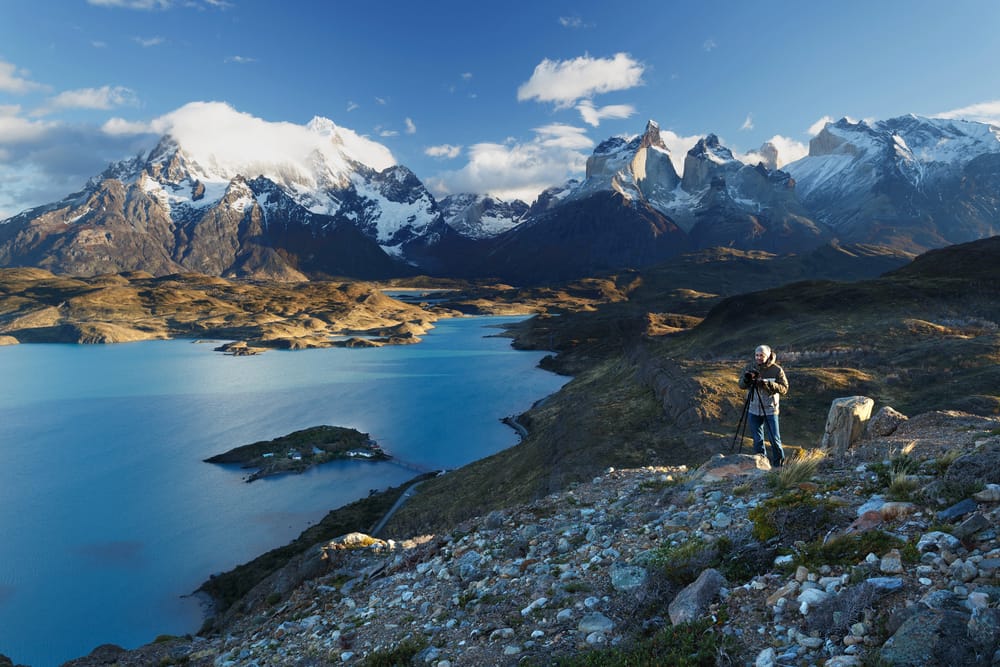
But don’t be fooled—even in summer, Patagonian weather is unpredictable. In a single day, you might get sunshine, rain, strong winds, and even biting cold. Pack layered clothing, and make sure to leave room in your backpack for a warmer jacket. You’ll be glad you did.
If possible, avoid the peak months of January and February. During this time, the parks are more crowded, prices go up, and hotels fill quickly. December and March usually offer the same great weather, but with fewer people. It’s like finding a deserted beach at the end of summer.
Now, if you enjoy snow and don’t mind the cold, June to August can be a great choice. On the Argentinian side, especially in Ushuaia and Bariloche, ski season is in full swing. The mountains are blanketed in white, and the scenery turns into a holiday postcard. On the Chilean side, most parks—like Torres del Paine—enter a quieter mode. Some trails close, and the winds pick up. But on the flip side, peace and silence take over.
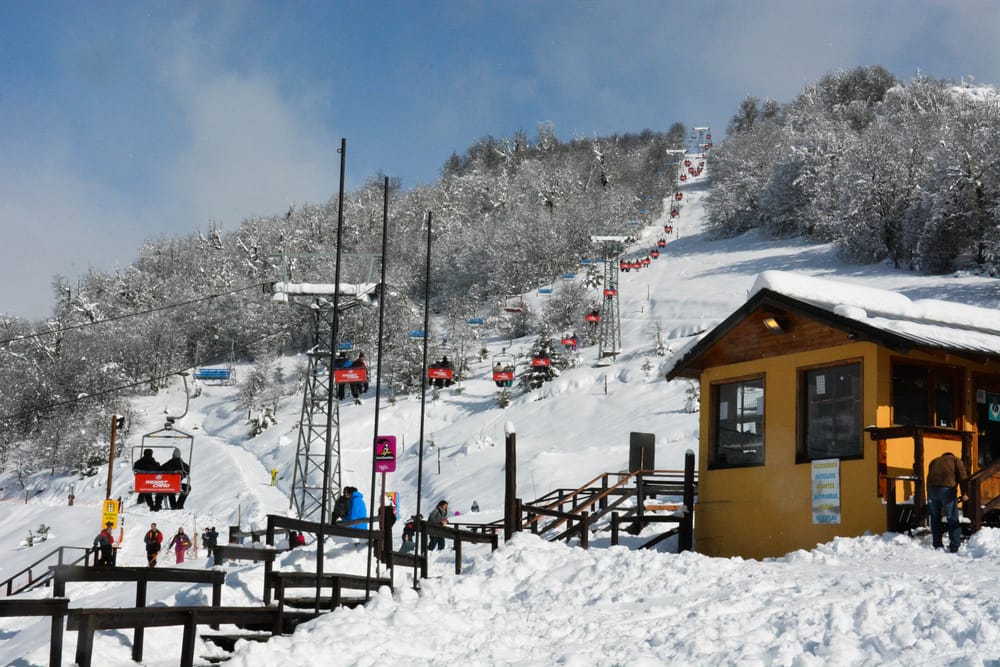
September and April are transitional months. You can still catch stunning landscapes, with changing vegetation colors and snow-capped mountains in the background. It’s a great time for those looking to save money and avoid the crowds, while still experiencing the best of the region.
In the end, it all depends on your style. If you want to go on long hikes, see glaciers up close, and explore the parks, choose summer. If you prefer calm, snow, and silence, go in winter. No matter the season, Patagonia will surprise you. It’s like opening a timeless adventure book.
The truth is, there’s no single perfect moment. Patagonia is like an opera: grand, unpredictable, and thrilling. And each season is a different act in the same fascinating story.
